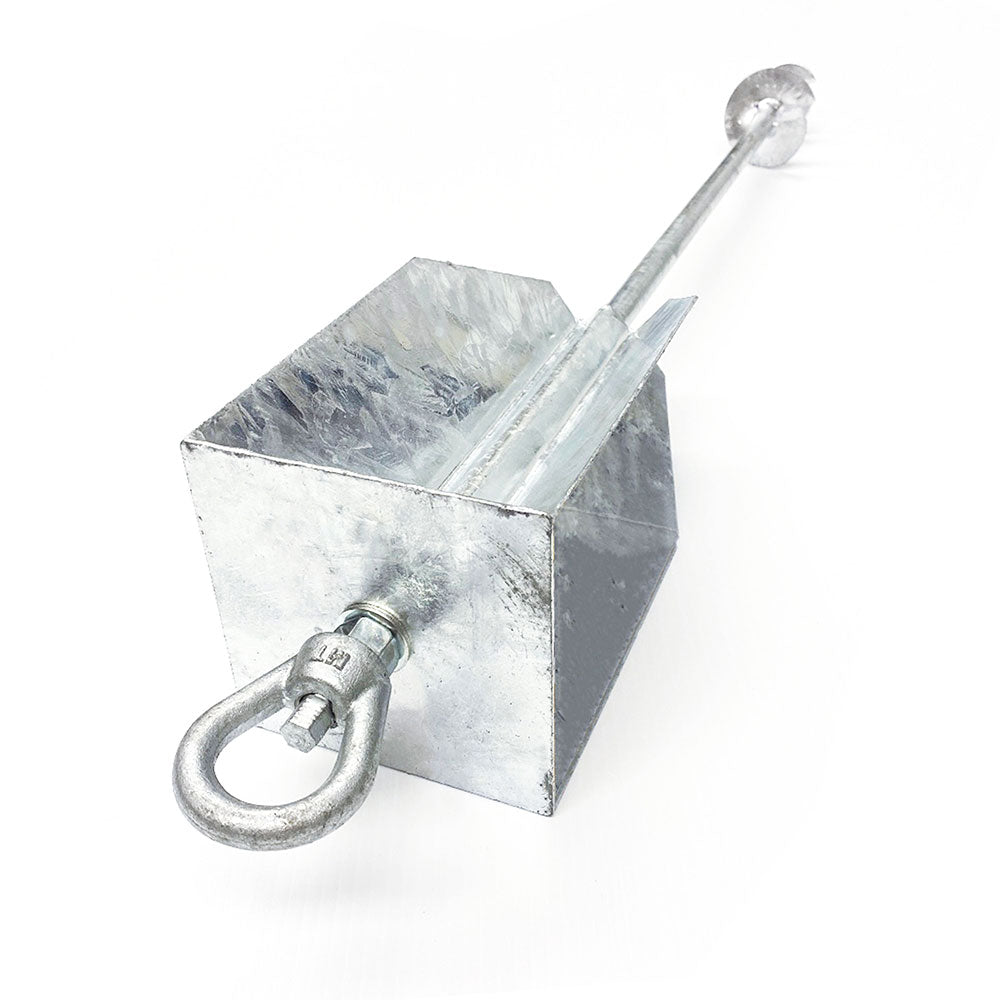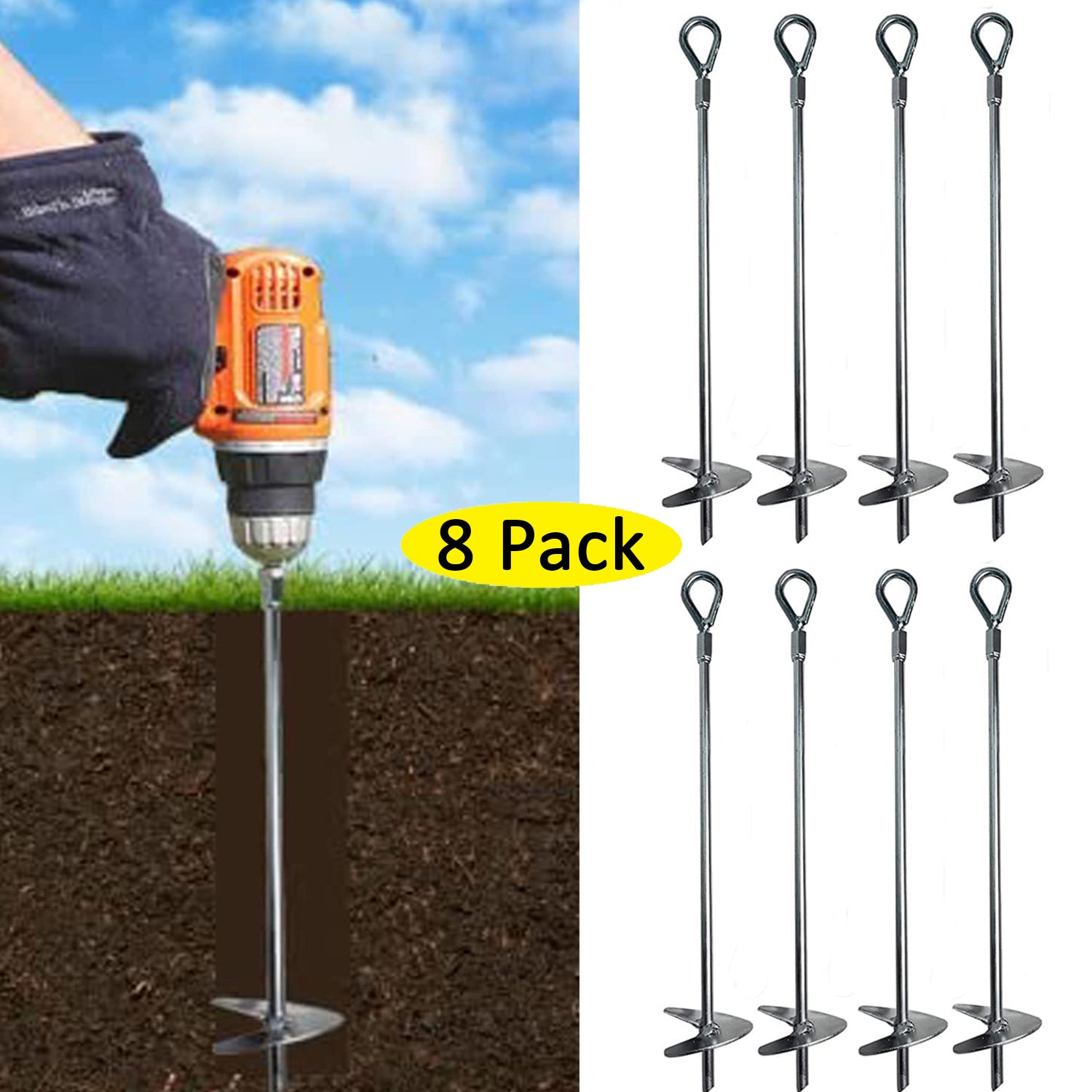The Mechanics of a High-Performance Ground Anchor System
The Mechanics of a High-Performance Ground Anchor System
Blog Article
Check Out the Various Kinds Of Ground Anchor for Your Next Project
From auger anchors, which stand out in diverse soil problems, to risk anchors made for temporary installments, the options are countless. In addition, concrete and screw anchors existing unique benefits in particular situations, while deadman anchors are customized for applications requiring resistance to side forces.

Auger Anchors
Auger anchors are a popular option in various construction and landscaping tasks as a result of their one-of-a-kind layout and efficient securing capabilities. These supports are composed of a helical screw-like shaft that is driven into the ground, permitting for a secure and safe hold. The spiral layout facilitates simple installation and makes the most of resistance versus lateral forces, making auger anchors especially efficient in applications such as secure fencing, short-term structures, and erosion control.
The installation procedure of auger anchors is relatively simple. They can be by hand or mechanically mounted, depending on the dimension and needed depth. This flexibility allows for their usage in varied dirt problems, from sandy to clayey surfaces. Auger supports can be easily removed and recycled, which includes to their cost-effectiveness and sustainability.
Among the substantial benefits of auger supports is their ability to disperse loads evenly throughout the bordering soil, reducing the threat of soil disruption and decreasing ecological effect. Additionally, they are less vulnerable to heaving or loosening in time contrasted to conventional anchoring approaches. Subsequently, auger supports are an excellent selection for tasks calling for dependable and sturdy anchoring services.

Risk Anchors
When it involves safeguarding frameworks in a range of outside applications, risk anchors supply a trustworthy and simple solution. These anchors are commonly built from long lasting materials such as steel or light weight aluminum, made to hold up against ecological anxieties while providing ideal security. Their easy design permits quick installation, making them a suitable selection for short-term or permanent anchoring requirements.
Stake anchors are specifically valuable in securing tents, covers, and various other lightweight structures against wind and climate. They operate by being driven into the ground at an angle, developing a strong hold that stands up to pull-out forces - Ground Anchor. The efficiency of risk supports depends upon several elements, including dirt kind, moisture content, and the angle of installment
For included security, numerous risk supports include attachment points for bands or ropes, enabling stress modifications as necessary. In applications such as landscaping or construction, they can efficiently maintain tools or structures on uneven surface. Generally, risk anchors provide a versatile and affordable solution for safeguarding different outdoor installments, making them a preferred option for service providers and DIY lovers alike.
Concrete Anchors
Concrete supports supply a durable remedy for protecting structures to concrete surface areas, making certain stability and safety in numerous applications. These anchors are necessary for tasks varying from property buildings to large-scale industrial installments. They can be found in various types, including expansion supports, adhesive supports, and undercut supports, each made for specific tons requirements and ecological problems.
Adhesive anchors use high-strength epoxy or material to bond the support to the concrete, explanation supplying superior load-bearing capabilities, especially in split concrete scenarios. Undercut supports produce an one-of-a-kind form within the concrete, supplying outstanding holding power, specifically in applications where tensile tons are widespread.
When implemented correctly, concrete anchors substantially boost the structural stability of numerous projects, making them vital in contemporary building and construction techniques. Understanding the particular needs of your project will certainly assist in selecting the ideal type of concrete support for the job.
Screw Anchors

Screw supports are a flexible securing option that can be efficiently employed in a range of applications where standard concrete anchors may not be sufficient. These anchors contain a helical style that enables them to be conveniently driven into the ground, making them perfect for use in dirt and other substrates. Their distinct framework gives superb holding power and resistance to pull-out pressures, making them ideal for numerous projects, from landscaping to structural support.
Among the main benefits of screw supports is their ease of installation. They call for very little equipment and can often be mounted without the demand for excavation, which saves both time and labor expenses. In addition, screw anchors can be gotten rid of and recycled, providing a lasting option for short-lived applications.
Screw anchors are especially helpful in locations where soil conditions are testing, such as loose or sandy dirts. Their capability to be mounted at varying depths permits for customization based upon details project demands. Generally, screw anchors supply a dependable and reliable securing method, making them an outstanding choice for service providers and designers seeking effective options for their projects.
Deadman Anchors
Deadman anchors offer as a durable solution for supporting frameworks in difficult problems, especially where standard securing methods might fail. These anchors contain big, heavy objects buried underground, which produce resistance against lateral pressures. The pop over here layout normally includes a horizontal component, such as a block of concrete or a steel plate, hidden in the dirt, to which straps or cords are attached.
The efficiency of deadman anchors lies in their capability to distribute tons over a larger area, reducing the danger of failing in unstable dirt conditions. They are especially advantageous in applications such as preserving wall surfaces, temporary frameworks, and slope stablizing, where soil motion can compromise the honesty of the framework.
Installation of deadman supports calls for cautious preparation to guarantee they are put at the proper deepness and positioning, optimizing their load-bearing ability. While they might require more labor and material than light-weight anchors, their dependability in negative conditions makes them important for long-lasting jobs. In addition, deadman supports are functional and can be adjusted to numerous applications, making them a best option for engineers dealing with special difficulties in their projects.
Final Thought
In recap, choosing the proper kind of ground anchor is important for making sure stability and safety and security in numerous jobs. Auger anchors master visit the site varied soil conditions, while stake supports fit short-term applications. For concrete surfaces, development and sticky supports provide reliable alternatives, and screw supports use flexibility in challenging surfaces. Deadman supports are particularly efficient in resisting lateral pressures for maintaining walls. Careful factor to consider of these alternatives will certainly boost project results and architectural integrity.
In addition, concrete and screw supports existing distinct advantages in specific situations, while deadman anchors are tailored for applications needing resistance to side forces - Ground Anchor.Auger supports are a preferred option in numerous building and construction and landscape design jobs due to their distinct style and effective securing abilities. They come in various types, including development anchors, sticky supports, and undercut supports, each designed for specific load demands and environmental conditions
Sticky supports make use of high-strength epoxy or material to bond the anchor to the concrete, supplying superior load-bearing capacities, especially in fractured concrete situations. Overall, screw anchors give a trusted and effective securing method, making them a superb choice for professionals and designers seeking efficient solutions for their projects.
Report this page